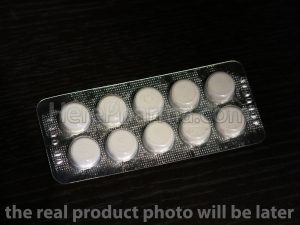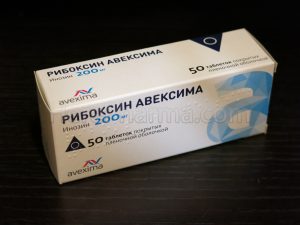$19.00
Description
Furosemide 40mg – 50tablets
Pharmacological action
Loop diuretic. It violates the reabsorption of sodium and chlorine ions in the thick segment of the ascending part of the Henle loop. Due to the increase in the release of sodium ions, a secondary (mediated by osmotically bound water) enhanced excretion of water and an increase in the secretion of potassium ions in the distal part of the renal tubular occurs. Simultaneously increases the excretion of calcium and magnesium ions.
Has secondary effects caused by the release of neurotransmitters and intrarenal redistribution of intrarenal blood flow. Against the background of the course of treatment, there is no weakening of the effect.
In heart failure, quickly leads to a reduction of preload on the heart through the expansion of large veins. It has a hypotensive effect due to an increase in the excretion of sodium chloride and a decrease in the reaction of vascular smooth muscle to vasoconstrictor effects and as a result of a decrease in BCC. The effect of furosemide after the on/in the introduction occurs in 5-10 minutes; after oral administration – 30-60 minutes, a maximum of the action is after 1-2 hours, the duration of effect is 2-3 hours (if reduced kidney function – up to 8 hours). During the period of action, the excretion of sodium ions increases significantly, but after its termination, the rate of excretion decreases below the initial level (“ricochet” syndrome, or “cancellation”). The phenomenon is caused by the sharp activation of renin-angiotensin and other antinatriuretic neurohumoral regulation links in response to massive diuresis; it stimulates arginine-vasopressive and sympathetic systems. Reduces the level of atrial natriuretic factor in plasma, causes vasoconstriction.
Due to the phenomenon of “ricochet” when taking 1 time/day may not have a significant effect on the daily excretion of sodium ions and blood PRESSURE. When on/in the introduction causes dilation of peripheral veins, reduces preload, reduces left ventricular filling pressure and pressure in the pulmonary artery, as well as systemic blood PRESSURE.
Diuretic action develops 3-4 minutes after I / V and lasts 1-2 hours; after oral administration-20-30 minutes, lasts up to 4 hours.
Pharmacokinetics
After oral absorption is 60-70%. In severe kidney disease or chronic heart failure, the degree of absorption decreases.
Vd is 0.1 l/kg plasma protein Binding (mostly to albumin) is 95-99%. Metabolized in the liver. Excreted by the kidneys-88%, with bile – 12%. T1/2 in patients with normal renal and hepatic function is 0.5-1.5 h. with anuria T1/2 may increase to 1.5-2.5 h, with combined renal and hepatic insufficiency – up to 11-20 h.
Indications
Edema syndrome of various origins, including chronic heart failure stage II-III, liver cirrhosis (portal hypertension syndrome), nephrotic syndrome. Pulmonary edema, cardiac asthma, brain edema, eclampsia, forced diuresis, severe hypertension, some forms of hypertensive crisis, hypercalcemia.
Dosage regimen
Establish individually, depending on indications, a clinical situation, age of the patient. In the course of treatment, the dosage regimen is adjusted depending on the magnitude of the diuretic response and the dynamics of the patient’s condition.
When taken orally, the initial dose for adults is 20-80 mg/day, then, if necessary, the dose is gradually increased to 600 mg / day. For children, a single dose is 1-2 mg/kg.
The maximum oral dose for children is 6 mg / kg.
When/in (jet) or/m dose for adults is 20-40 mg 1 time/day, in some cases – 2 times/day. For children, the initial daily dose for parenteral use-1 mg / kg .




